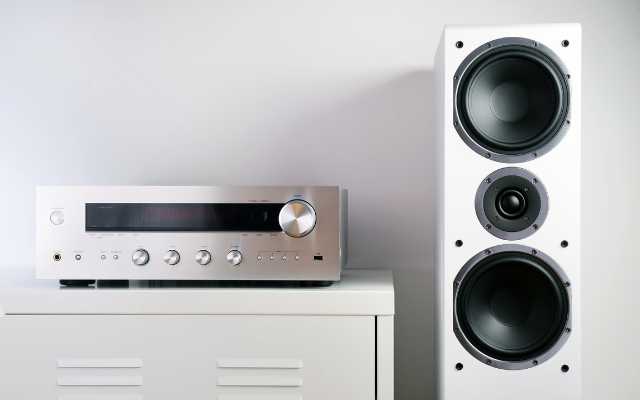How to Choose and Set Up the Right Home Theater System for Your Needs

How to Choose and Set Up the Right Home Theater System for Your Needs: A home theater system can provide an immersive entertainment experience that rivals going to the movies. Choosing and setting up the right home theater system can be a daunting task, but with the right knowledge, you can create a cinematic experience in your home. In this article, we will discuss how to choose and set up the right home theater system for your needs.
What is a home theater system?
A home theater system is a collection of audio and video equipment that is designed to provide a cinematic experience in the comfort of your own home. A typical home theater system includes a large-screen TV or projector, surround sound speakers, a receiver, and media players such as a DVD or Blu-ray player or streaming device. The system is designed to replicate the sound and picture quality of a movie theater, with immersive surround sound and high-quality video.
A home theater system can be customized to fit your needs and budget, with options ranging from a simple soundbar and TV setup to a full 4K projection system with a dedicated theater room. The goal of a home theater system is to provide a more immersive and enjoyable entertainment experience in your home.
How to Choose and Set Up the Right Home Theater System for Your Needs
- Determine Your Budget
Before choosing a home theater system, it’s essential to determine your budget. Home theater systems can range from a few hundred dollars to tens of thousands of dollars. Setting a budget will help you narrow down your options and choose a system that fits your needs and budget.
- Determine Your Space
The size and shape of your room will impact the type of home theater system you choose. If you have a small room, a soundbar or bookshelf speakers may be sufficient. However, if you have a larger room, a 5.1 or 7.1 surround sound system with floor-standing speakers may be necessary to provide the best audio experience.
- Choose Your Speakers
Speakers are a crucial component of a home theater system, and choosing the right ones can make all the difference. Bookshelf speakers are an excellent choice for small rooms, while floor-standing speakers provide a fuller sound for larger rooms. Center channel speakers provide clear dialogue, and surround speakers create an immersive audio experience.
- Choose Your Receiver
A receiver is the heart of a home theater system and is responsible for powering and processing the audio and video signals. It’s essential to choose a receiver that can handle the number of speakers in your system and has the necessary inputs for your devices. Make sure to choose a receiver that supports the latest audio and video formats, such as Dolby Atmos and 4K HDR.
- Choose Your Display
The display is another crucial component of a home theater system, and there are many options available. A 4K HDR TV or projector is an excellent choice for a home theater system, but it’s essential to choose a display that fits your budget and space.
- Set Up Your System
Once you have chosen your speakers, receiver, and display, it’s time to set up your system. Start by connecting your devices to the receiver and the receiver to the display. Make sure to follow the manufacturer’s instructions for setting up your system and calibrating the audio and video settings.
What do the channels mean?
In the context of a home theater system, channels refer to the number of audio signals or speakers in the system. Each channel corresponds to a separate audio signal that is played through a dedicated speaker, creating a more immersive and realistic audio experience.
The most common channel configurations in home theater systems are:
- 2.0: This configuration includes two speakers, one for the left channel and one for the right channel. This is a basic setup that provides stereo sound.
- 2.1: This configuration includes two speakers for the left and right channels and a subwoofer for bass frequencies.
- 5.1: This configuration includes five speakers and a subwoofer. The five speakers include a left, center, and right front speaker, and left and right surround speakers. This is the most common surround sound setup.
- 7.1: This configuration includes seven speakers and a subwoofer. The additional two speakers are placed behind the listener to provide a more immersive surround sound experience.
- Dolby Atmos: This is the latest and most advanced surround sound format. It adds height channels to the traditional 5.1 or 7.1 setups, allowing for sound to be placed and moved in a three-dimensional space.
In short, channels refer to the number of audio signals or speakers in a home theater system, and each channel corresponds to a separate audio signal played through a dedicated speaker. Choosing the right channel configuration for your home theater system depends on your budget, room size, and desired audio experience.
What kind of home theater systems are there?
There are several types of home theater systems available, ranging from simple setups with a TV and soundbar to more complex setups with a dedicated room, projector, and multiple speakers. Here are some of the most common types of home theater systems:
- Soundbar system: This is the simplest and most affordable type of home theater system. It includes a soundbar that houses multiple speakers in one unit, and a subwoofer for bass frequencies. Soundbars can be a great option for those who don’t want a complicated setup or have limited space.
- Home theater in a box (HTIB): This is a pre-packaged home theater system that includes a receiver, speakers, and a subwoofer. HTIBs are easy to set up and can be an affordable option for those who want a more immersive audio experience than a soundbar.
- Component system: This type of home theater system allows you to choose each component individually, including the TV or projector, speakers, receiver, and media player. Component systems can be more expensive but offer more flexibility and customization options.
- Dedicated theater room: A dedicated theater room is a separate room in the home that is designed specifically for a home theater system. It includes a large screen or projector, multiple speakers, and comfortable seating. A dedicated theater room can provide the most immersive and realistic movie-watching experience but can be expensive and require significant space.
- Wireless system: Wireless home theater systems are becoming increasingly popular, as they eliminate the need for wires and cables. This type of system allows you to connect the components wirelessly, including the speakers, media player, and even the TV or projector.
In short, there are several types of home theater systems available, ranging from simple soundbars to more complex setups with multiple speakers and a dedicated theater room. The type of system you choose depends on your budget, room size, and desired audio and video experience.
- What is Spotify? Music, pricing, and features explained
- Amazon Freedom Sale 2022
- Apple iPhone 14 pro Max Review
- Seven Tips For Choosing The Best Boarding School For Your Child
Conclusion
Choosing and setting up the right home theater system can provide an immersive entertainment experience in your home. Determining your budget, space, choosing your speakers, receiver, and display, and setting up your system are all essential components of creating a home theater system that fits your needs. By following these tips, you can choose and set up the right home theater system for your needs and enjoy a cinematic experience in your home.






